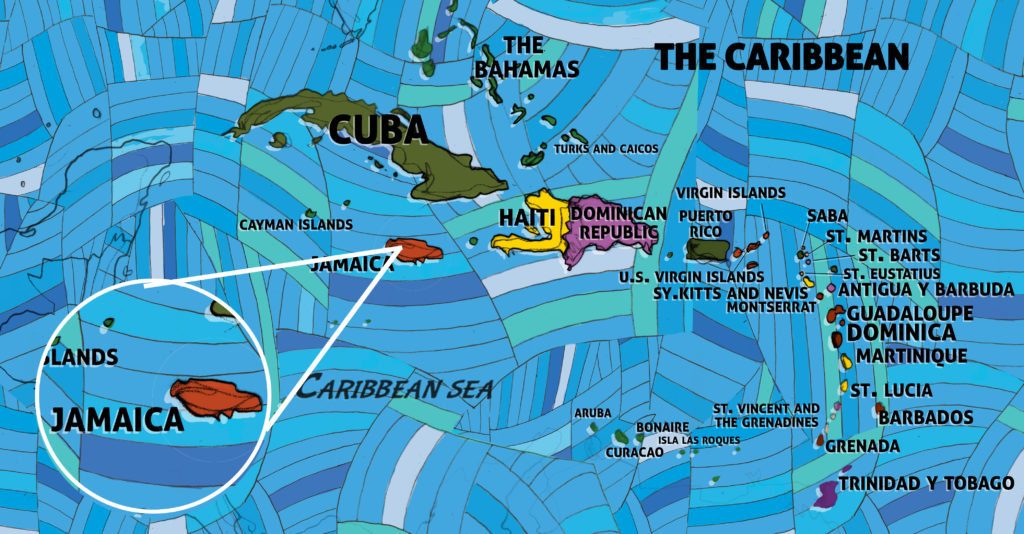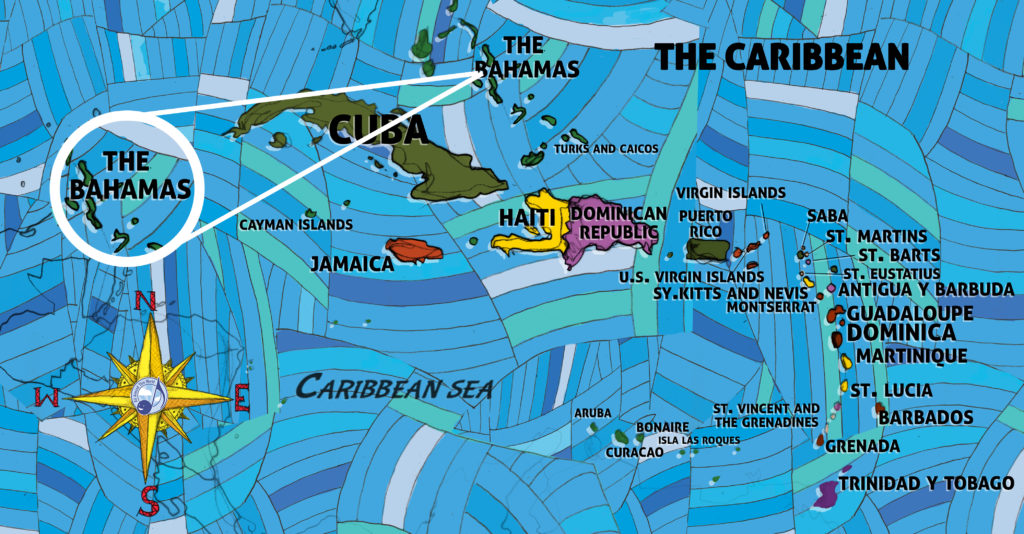Let’s meet Jamaica’s treasured mento icons, The Jolly Boys.
“Mento” is Jamaican “country” played initially in rural areas with a simple guitar/drum/sax and/or banjo accompaniment in which vocalists sang mainly humorous lyrics about rural life. In the 1950s, Mento’s “Golden Age,” the style embraced Trinidadian calypso (though it remained distinct) and become popular in urban dance halls. The Jolly Boys have been at the heart of Jamaican mento since their formation in 1945. Though they continue to tour and record, they remain loyal to their main local gig as the house band at GeeJam, a Port Antonio, Jamaica, hotel. As of their appearance in this video, they’re sure at the top of their game.
Kumina in Jamaica
We start our week of music of Jamaica with Jamaican Kumina, an early Afro-Caribbean religious folk music that paid, and still continues to pay, homage to “the spirits” through communal drumming, chanting and dance.
We begin here because most subsequent genres of Jamaican music can trace its roots back to kumina, and through kumina, back further to Africa. Jamaican Kumina is an ancestor of Nyabinghi music, which itself intertwined with ska, rocksteady, reggae, dub, dancehall and beyond. This video will start you on your way.
Jammin’ in Jamaica

This week in our online class we’re fortunate enough to travel to Jamaica, a small island nation that has had a disproportionate influence on global music and culture. Jamaican musicians have either originated or advanced so very many musical styles such as, in roughly chronological order, Kumina, Nyabinghi, Mento, Ska, Rocksteady, Reggae, Dub and Dancehall/Ragga. Though we’re going to meet a few of these genres over the course of the week, there won’t be enough time. We’ll leave wanting more, and more, and more….
Wake Up Early and Enjoy Junkanoo
How lucky are we that we get to celebrate Junkanoo?
While a lot of the traditional folk songs from The Bahamas have to do with boats, sailing, pirates, rum running and other maritime pursuits, the islands are actually best known for “Junkanoo,” the celebratory music that arose from the yearly Junkanoo festivals which take place on December 26 and on New Year’s Day. Both festivals start at 1 a.m. and go until 9 a.m. (Seriously!) There are different accounts of how Bahamanians, and those in other parts of the Caribbean like Jamaica, celebrate Junkanoo, but most agree that the tradition is over two hundred years old and began as a dancing celebration of African slaves to mark their yearly three day Christmas “holiday” or of former slaves to mark their emancipation. Early junkanoo dancers costumed themselves in whatever materials they could find, gluing paper or feathers to their clothes. Today there are extensive junkanoo groups, like the one featured in this video, that work on their colorful costumes all year and compete for prizes in an official parade, hit cowbells, play drums and blow conch shells as horns.
“Speak Like We!”
Let’s speak Bahamian English!
People in the Bahamas speak a dialect of English that playfully blends British, African and Taino words. For example, in Bahamian English, instead of saying “The children are watching the fish,” you would say “Duh chirren dem is vatchin’ duh fishes.” (Want examples? Visit BahamasGuru.com and “Speak Like We!“) Bahamian English is different than Bahamian Creole, which is a creole based on English.
Take a Saw, then “Rake ‘n’ Scrape”
Run to the cupboard for instruments to get ready for some Bahamian rake-n-scrape.
In the Bahamas you don’t need traditional instruments to make music. Look in the toolshed and go forth! You may well find yourself making Bahamian “rake ‘n’ scrape” music, in which musicians accompany European-style dances like the Bahamian quadrille and the polka by hitting a goombay drum, bending a saw and scraping it with a small tool such as a screwdriver. Enjoy some raking and scraping in this video.
The Sun Shines Brighter in the Bahamas

This week in our online class we’re not only lucky enough to be going to the beautiful Bahamas, but we have the honor of marching into the street, drums in hand, to celebrate freedom. Whatever smile is on your face right now, it could be bigger in the Bahamas. Whatever your money is doing in your relatively traceable domestic bank account, it could probably be frolicking much more freely, and more privately, in the Bahamas. So let’s go there.
Rafael Cortijo helped start Salsa
We can’t end our week of music from Puerto Rico without even a nod to salsa, one of Puerto Rico’s most danceable musical exports, and one of its formative stars, Rafael Cortijo.
The musical progeny of Cuban son, from which it borrows its signature 3-2 and 2-3 clave patterns, the genre may have started in Cuba and Puerto Rico but really took root in the ’60s and ’70s in New York City where Puerto Rican immigrants fused son, mambo and little guaracha to make an extraordinary new musical form. In this video meet Rafael Cortijo, a leading Puerto Rican big band leader from the ’50s and ’60s. He and his combos started by performing only plena, then branched out to merengue and, eventually, salsa.
“Bomba’s from Puerto Rico, but first from Africa”
In music class we sing “Rule Sonda,” a bomba song that inspires us to dance, and receive a very basic, yet we hope inspiring, introduction to this essential Afro-Caribbean artform. The dance begins when one student, either chosen or who volunteers to be the dancer, gets up and starts to move. Outfitted with percussion instruments galore, the rest of the students are drummers who follow the dancer by increasing or decreasing tempo volume as dancer becomes more or less enthusiastic. For your young kids’ first foray into bomba don’t worry too much about mastery — empower dancers to dance, drummers to follow and everyone to have fun.
Puerto Rican Bomba is a joy to drum and dance
Puerto Rican bomba is an African-inspired folk music style that is deeply intertwined with dance.
The Bomba percussion ensemble consists mainly of maracas, palitos (clave-like sticks struck together), a cua (a bamboo tube struck with wooden sticks), and hand drums known as “bariles,” because they were traditionally made from the wood of barrels. There are low-pitched hand drums like the “buleador” (the “segundo”), which lays the foundation of the beat, and the high-pitched “subidor” (the “primo”) which improvises.

